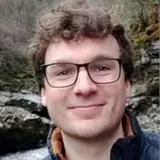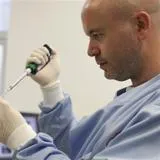The Centre for Ultrastructural Imaging (CUI) is the central electron microscopy facility at Kings College London. We offer a state-of-the-art facility for internal and external collaborators from academic, commercial, and industrial fields across medicine, biological sciences, chemistry, physics, materials sciences, and engineering.
Our vision is to provide expert electron microscopy services and support to research groups as well as training new electron microscopists in advanced techniques.
Collaboration
We operate as a collaborative research facility and support researchers with experiment design and data interpretation ensuring that high-quality data is collected and prepared for publication. Our staff can assist with method development, materials, figure presentation, appropriate references, training on specialised equipment and data interpretation.
Where a significant contribution has been identified, researchers are expected to acknowledge the contribution of CUI staff by way of authorship, in accordance with the Core Facilities Fair Publication Policy.
We provide cutting-edge and comprehensive workflows to support life and materials science electron microscopy. Electron microscopes come in a variety of shapes and sizes and when used correctly, they are powerful investigative tools, capable of revealing a fascinating miniature world which is not visible with the naked eye, or even with a light microscope.
We work with leading international research groups, as well as instrument manufacturers to support advanced electron microscopy techniques and promote novel ideas and innovation.
Here are some of the techniques available in the CUI.
- Transmission electron microscopyTransmission electron microscopes (TEMs) show the structures of tissue and compartmentalisation of mutually exclusive regions of cells.
- Cryogenic transmission electron microscopy (Cryo-TEM)Cryo-TEM is a specialised technique that rapidly freezes samples to cryogenic temperatures to preserve the natural state of biological materials.
- Scanning electron microscopy (SEM)Using SEM, we are able to generate an image showing topographical detail.
- Cryogenic scanning electron microscopy (Cryo-SEM)Cryo SEM is very good for study of cellular and structural biology, allowing research with sub nanometre resolution imaging at very low operating voltage.
- Cryogenic Electron Microscopy Of Vitreous SectionsCryogenic transmission electron microscopy of thin vitrified films of aqueous suspensions allow small biological particles to be observed in their native state.
- Tokuyasu technique and immunogold labellingTokuyasu cryosectioning technique allows immune labelling and therefore the detection of specific proteins in cells by electron microscopy.
- Freezer FractureFreeze fracturing is a process where a frozen specimen is cracked to reveal a plane through the tissue.
- Critical Point DryingCritical point drying preserves ultrastructure and provide a room temperature stable sample for imaging in a scanning electron microscope.
- High-pressure freezing and freeze substitutionMany methods allow rapid freeze fixation/immobilisation of tissues.
- Energy dispersive X-ray spectroscopyEnergy dispersive x-ray spectroscopy is used to determine and quantify the elemental composition of a sample.
- Electron tomography (ET)ET is a powerful technique to generate a detailed 3D volume which reveals structures of sub-cellular macro-molecular objects at the nanometre scale.
- Scanning transmission electron microscopyA scanning transmission electron microscope is equipped with additional scanning coils, detectors and necessary circuitry.
- Volume electron microscopySerial block face scanning electron microscopy can generate large 3D volumes by assembling sequential 2D images acquired in a scanning electron microscope.
- Correlative light and electron microscopyLight microscopy techniques are often employed to image dynamic events in living cells and tissue and/or image complex tissues.
- Vitreous thin filmPlunge freezing methods for vitrifying and creating a vitreous thin film (VTF) sample for cryogenic electron microscopy have been widely adopted.
Facility staff
Affiliated academics
Equipment available at the CUI
Related equipment

JEOL JEM-1400Flash
The JEOL JEM-1400Flash is used to study a variety of materials from nanoparticles, viruses, bacteria, and sections of cells and tissues.
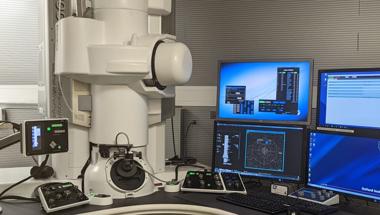
JEOL JEM-F200 TEM
The JEOL JEM-F200 is our current cryo-TEM and is used for screening of cryo-samples as well as room temperature applications such as tomography.

JEOL JSM 7800F Prime Cryo-SEM
The JEOL JSM 7800F Prime SEM is our current top end SEM, equipped with a Schottky FEG and has the capability to run in cryo mode.

JEOL JSM 7800F SBF-SEM
The JSM 7800F Serial Block Face SEM is the same microscope as our top end JSM 7800F Prime Cryo-SEM and it is equipped with a katana microtome for volume EM.
.xad3c57ce.jpg?w=780&h=780&crop=780,440,0,170&width=380&height=215&fit=crop&f=webp)
JEOL JIB-4700F Z Dual Beam FIB-SEM
The microscope is used to create lamellae for electron tomography and volume electron microscopy

JEOL JCM 7000 NeoScope Benchtop SEM
The JEOL JCM 7000 NeoScope is our smallest electron microscope, but despite its small size it is a very capable instrument packed with features.
2024 Publications
Boyanova, S.T. et al. (2023) ‘Interaction of amisulpride with GLUT1 at the blood-brain barrier. Relevance to Alzheimer’s disease’, PLOS ONE, 18(10), p. e0286278. Available at: https://doi.org/10.1371/journal.pone.0286278.
Burkitt-Gray, M. et al. (2023) ‘Structural investigations into colour-tuneable fluorescent InZnP-based quantum dots from zinc carboxylate and aminophosphine precursors’, Nanoscale, 15(4), pp. 1763–1774. Available at: https://doi.org/10.1039/D2NR02803D.
Horton, S. et al. (2024) ‘Excitatory and inhibitory synapses show a tight subcellular correlation that weakens over development’, Cell Reports, 43(7). Available at: https://doi.org/10.1016/j.celrep.2024.114361.
Kenny, F.N. et al. (2023) ‘Autocrine IL-6 drives cell and extracellular matrix anisotropy in scar fibroblasts’, Matrix Biology, 123, pp. 1–16. Available at: https://doi.org/10.1016/j.matbio.2023.08.004.
Nicholls, D. et al. (2024) ‘The Potential of Subsampling and Inpainting for Fast Low-Dose Cryo FIB-SEM Imaging’, Microscopy and Microanalysis, 30(1), pp. 96–102. Available at: https://doi.org/10.1093/micmic/ozae005.
Velazco, A. et al. (2024) ‘Reduction of SEM charging artefacts in native cryogenic biological samples’. bioRxiv, p. 2024.08.23.609373. Available at: https://doi.org/10.1101/2024.08.23.609373.
Wilson, S. et al. (2024) ‘Hydrophobic Mismatch in the Thylakoid Membrane Regulates Photosynthetic Light Harvesting’, Journal of the American Chemical Society, 146(21), pp. 14905–14914. Available at: https://doi.org/10.1021/jacs.4c05220.
2023 Publications
Boyanova, S.T. et al. (2023) ‘Interaction of amisulpride with GLUT1 at the blood-brain barrier. Relevance to Alzheimer’s disease’, PLOS ONE, 18(10), p. e0286278. Available at: https://doi.org/10.1371/journal.pone.0286278.
Burkitt-Gray, M. et al. (2023) ‘Structural investigations into colour-tuneable fluorescent InZnP-based quantum dots from zinc carboxylate and aminophosphine precursors’, Nanoscale, 15(4), pp. 1763–1774. Available at: https://doi.org/10.1039/D2NR02803D.
Kenny, F.N. et al. (2023) ‘Autocrine IL-6 drives cell and extracellular matrix anisotropy in scar fibroblasts’, Matrix Biology, 123, pp. 1–16. Available at: https://doi.org/10.1016/j.matbio.2023.08.004.
Morfill, C. et al. (2023) ‘Addition to “Nanostars Carrying Multifunctional Neurotrophic Dendrimers Protect Neurons in Preclinical In Vitro Models of Neurodegenerative Disorders”’, ACS Applied Materials & Interfaces, 15(10), pp. 13824–13824. Available at: https://doi.org/10.1021/acsami.3c02300.
Naso, G. et al. (2023) ‘Cytosine Deaminase Base Editing to Restore COL7A1 in Dystrophic Epidermolysis Bullosa Human: Murine Skin Model’, JID Innovations, 3(3), p. 100191. Available at: https://doi.org/10.1016/j.xjidi.2023.100191.
Rigby, M. et al. (2023) ‘Multi-synaptic boutons are a feature of CA1 hippocampal connections in the stratum oriens’, Cell Reports, 42(5), p. 112397. Available at: https://doi.org/10.1016/j.celrep.2023.112397.
Zhang, W. et al. (2023) ‘Characterising the chemical and physical properties of phase-change nanodroplets’, Ultrasonics Sonochemistry, 97, p. 106445. Available at: https://doi.org/10.1016/j.ultsonch.2023.106445.
2022 Publications
Mórotz, G.M. et al. (2022) ‘The PTPIP51 coiled-coil domain is important in VAPB binding, formation of ER-mitochondria contacts and IP3 receptor delivery of Ca2+ to mitochondria’, Frontiers in Cell and Developmental Biology, 10. Available at: https://doi.org/10.3389/fcell.2022.920947.
2021 Publications
Wallis, S., Ventimiglia, L., Otigbah, E., Infante, E., Cuesta-Geijo, M., Kidiyoor, G., Carbajal, M., Fleck, R., Foiani, M., Garcia-Manyes, S., Martin-Serrano, J. and Agromayor, M., 2021. The ESCRT machinery counteracts Nesprin-2G-mediated mechanical forces during nuclear envelope repair. Developmental Cell, 56(23), pp.3192-3202.e8.
2020 Publications
Matsubayashi, Y., Sánchez-Sánchez, B., Marcotti, S., Serna-Morales, E., Dragu, A., Díaz-de-la-Loza, M., Vizcay-Barrena, G., Fleck, R. and Stramer, B., 2020. Rapid Homeostatic Turnover of Embryonic ECM during Tissue Morphogenesis. Developmental Cell, 54(1), pp.33-42.e9.
Valente, P., Kiryushko, D., Sacchetti, S., Machado, P., Cobley, C., Mangini, V., Porter, A., Spatz, J., Fleck, R., Benfenati, F. and Fiammengo, R., 2020. Conopeptide-Functionalized Nanoparticles Selectively Antagonize ExtrasynapticN-Methyl-d-aspartate Receptors and Protect Hippocampal Neurons from Excitotoxicity In Vitro. ACS Nano, 14(6), pp.6866-6877.
Awan, M., Buriak, I., Fleck, R., Fuller, B., Goltsev, A., Kerby, J., Lowdell, M., Mericka, P., Petrenko, A., Petrenko, Y., Rogulska, O., Stolzing, A. and Stacey, G., 2020 Dimethyl sulfoxide: a central player since the dawn of cryobiology, is efficacy balanced by toxicity? Regenerative Medicine, 15(3), pp.1463-1491.
Perrotta, S., Roberti, D., Bencivenga, D., Corsetto, P., O’Brien, K., Caiazza, M., Stampone, E., Allison, L., Fleck, R., Scianguetta, S., Tartaglione, I., Robbins, P., Casale, M., West, J., Franzini-Armstrong, C., Griffin, J., Rizzo, A., Sinisi, A., Murray, A., Borriello, A., Formenti, F. and Della Ragione, F., 2020. Effects of Germline VHL Deficiency on Growth, Metabolism, and Mitochondria. New England Journal of Medicine, 382(9), pp.835-844.
Hau, H., Ogundele, O., Hibbert, A., Monfries, C., Exelby, K., Wood, N., Nevarez-Mejia, J., Carbajal, M., Fleck, R., Dermit, M., Mardakheh, F., Williams-Ward, V., Pipalia, T., Conte, M. and Hughes, S., 2020. Maternal Larp6 controls oocyte development, chorion formation and elevation. Development
Petrova, A., Georgiadis, C., Fleck, R., Allison, L., McGrath, J., Dazzi, F., Di, W. and Qasim, W., 2020. Human Mesenchymal Stromal Cells Engineered to Express Collagen VII Can Restore Anchoring Fibrils in Recessive Dystrophic Epidermolysis Bullosa Skin Graft Chimeras. Journal of Investigative Dermatology, 140(1), pp.121-131.e6.
2019 Publications
Veraitch, O., Allison, L., Vizcay‐Barrena, G., Fleck, R., Price, A., Fenton, D., McGrath, J. and Stefanato, C., 2019. Detailed hair shaft analysis in a man with delayed‐onset Chediak‐Higashi syndrome. British Journal of Dermatology.
2017 Publications
So, E., Mitchell, J., Memmi, C., Chennell, G., Vizcay-Barrena, G., Allison, L., Shaw, C. and Vance, C., 2017. Mitochondrial abnormalities and disruption of the neuromuscular junction precede the clinical phenotype and motor neuron loss in hFUSWT transgenic mice. Human Molecular Genetics, 27(3), pp.463-474.
Jitraruch, S., Dhawan, A., Hughes, R., Filippi, C., Lehec, S., Glover, L. and Mitry, R., 2017. Cryopreservation of Hepatocyte Microbeads for Clinical Transplantation. Cell Transplantation, 26(8), pp.1341-1354.
Hale, V. L., Watermeyer, J. M., Hackett, F., Vizcay-Barrena, G., Van Ooij, C., Thomas, J. A., Spink, M. C., Harkiolaki, M., Duke, E., Fleck, R. A., Blackman, M. J. & Saibil, H. R. 28 Mar 2017 Parasitophorous vacuole poration precedes its rupture and rapid host erythrocyte cytoskeleton collapse in Plasmodium falciparum egress In : Proceedings of the National Academy of Sciences of the United States of America. 114, 13, p. 3439-3444.
Walker, A. S., Neves, G., Grillo, F., Jackson, R. E., Rigby, M., O’Donnell, C., Lowe, A. S., Vizcay-Barrena, G., Fleck, R. A. & Burrone, J. 7 Mar 2017 Distance-dependent gradient in NMDAR-driven spine calcium signals along tapering dendritesIn : Proceedings of the National Academy of Sciences of the United States of America. 114, 10, p. E1986-E1995.
Sekhar, G. N., Georgian, A. R., Sanderson, L., Vizcay-Barrena, G., Brown, R. C., Muresan, P., Fleck, R. A. & Thomas, S. A.1 Mar 2017 Organic cation transporter 1 (OCT1) is involved in pentamidine transport at the human and mouse blood-brain barrier (BBB) In : PL o S One . 12, 3, e0173474.
2016 Publications
Liakath-Ali, K., Vancollie, V., Lelliott, C., Speak, A., Lafont, D., Protheroe, H., Ingvorsen, C., Galli, A., Green, A., Gleeson, D., Ryder, E., Glover, L., Vizcay-Barrena, G., Karp, N., Arends, M., Brenn, T., Spiegel, S., Adams, D., Watt, F. and van der Weyden, L., 2016. Alkaline ceramidase 1 is essential for mammalian skin homeostasis and regulating whole-body energy expenditure. The Journal of Pathology, 239(3), pp.374-383.
Lussignol, M., Kopp, M., Molloy, K., Vizcay-Barrena, G., Fleck, R. A., Dorner, M., Bell, K. L., Chait, B. T., Rice, C. M. & Catanese, M. T. 1 Mar 2016. Proteomics of HCV virions reveals an essential role for the nucleoporin Nup98 in virus morphogenesis In : Proceedings of the National Academy of Sciences of the United States of America. 113, 9, p. 2484-2489.
Chapple, S. J., Keeley, T. P., Mastronicola, D., Arno, M., Vizcay-Barrena, G., Fleck, R., Siow, R. & Mann, G. Mar 2016. Bach1 differentially regulates distinct Nrf2-dependent genes in human venous and coronary artery endothelial cells adapted to physiological oxygen levels In : Free radical biology & medicine. 92, p. 152-162.
Veraitch, O., Perez, A., Hoque, S. R., Vizcay-Barrena, G., Fleck, R. A., Fenton, D. A. & Stefanato, C. M. Mar 2016. Hair Follicle Miniaturization in a Woolly Hair Nevus: A Novel “Root” Perspective for a Mosaic Hair Disorder In : American Journal of Dermatopathology. 38, 3, p. 239-243.
Wbp2 is required for normal glutamatergic synapses in the cochlea and is crucial for hearingBuniello, A., Ingham, N. J., Lewis, M. A., Huma, A. C., Martinez-Vega, R., Varela-Nieto, I., Vizcay-Barrena, G., Fleck, R. A., Houston, O., Bardhan, T., Johnson, S. L., White, J. K., Yuan, H., Marcotti, W. & Steel, K. P. 8 Feb 2016 In : EMBO Molecular Medicine. 8, 3, p. 191.-207.
Green, M., Haigh, S. J., Lewis, E. A., Sandiford, L., Burkitt-Gray, M., Fleck, R., Vizcay-Barrena, G., Jensen, L., Mirzai, H., Curry, R. J. & Dailey, L. A. 9 Feb 2016 The Biosynthesis of Infrared-Emitting Quantum Dots in Allium Fistulosum In : Scientific Reports. 6, 20480.
Georgiadis, C., Syed, F., Petrova, A., Abdul-Wahab, A., Lwin, S., Farzaneh, F., Chan, L., Ghani, S., Fleck, R., Glover, L., McMillan, J., Chen, M., Thrasher, A., McGrath, J., Di, W. and Qasim, W., 2016. Lentiviral Engineered Fibroblasts Expressing Codon-Optimized COL7A1 Restore Anchoring Fibrils in RDEB. Journal of Investigative Dermatology, 136(1), pp.284-292.
Watermeyer, J. M., Hale, V. L., Hackett, F., Clare, D. K., Cutts, E. E., Vakonakis, I., Fleck, R., Blackman, M. J. & Saibil, H. R. 21 Jan 2016. A spiral scaffold underlies cytoadherent knobs in Plasmodium falciparum-infected erythrocytes In : Blood. 127, 3, p. 343-351.
2015 Publications
Mitchell, J., Constable, R., So, E., Vance, C., Scotter, E., Glover, L., Hortobagyi, T., Arnold, E., Ling, S., McAlonis, M., Da Cruz, S., Polymenidou, M., Tessarolo, L., Cleveland, D. and Shaw, C., 2015. Wild type human TDP-43 potentiates ALS-linked mutant TDP-43 driven progressive motor and cortical neuron degeneration with pathological features of ALS. Acta Neuropathologica Communications, 3(1).
Fleck, R.A. (2015) Low temperature electron microscopy, in, Methods in Cryopreservation and Freeze-Drying (edsW.Wolkers and H. Oldenhof), Lab Protocol Series, Methods in Molecular Biology, Springer, Berlin, pp. 243–274.
2013 Publications
Carlin LM, Stamatiades EG, Auffray C, Hanna RN, Glover L, Vizcay-Barrena G, Hedrick CC, Cook HT, Diebold S, Geissmann F. Cell. 2013 Apr. Nr4a1-dependent Ly6C(low) monocytes monitor endothelial cells and orchestrate their disposal. 11;153(2):362-75.
We are dedicated to promoting collaborative research and providing wider access to our state-of-the-art core facilities. The Centre for Ultrastructural Imaging is open to External Academic and Industry users. Different types of access are available; we offer electron microscopy services and support, and provide training so that researchers can use CUI instruments independently.
To ensure we give the best help and support to research, King’s CUI Strategic Advisory Committee help the CUI team review and prioritise projects.
After an initial discussion about your project, you will be asked to complete a project application form, providing a brief description of the work you wish to carry out and what you expect to achieve using electron microscopy (EM). This will help the team select the best techniques for your project.
Training
Training on instruments is provided by CUI staff. All new uses need to complete training before unsupervised use of the instruments is granted. The level of training and the time required will vary depending on the instrument.
Booking equipment
Once a new user has completed training, time on microscopes can be booked by contacting the Centre. Sessions are normally three hours 9.30-12.30hrs and 13.30-16.30hrs. Independent users can book sessions via the booking system.
Cancelling a booking
Users can cancel a booking by contacting the Centre. Please give 24 hours’ notice. If users are more than 30 minutes late for a booking, they should contact the Centre, or the session will be cancelled, and instrument time will be charged as normal.
Publication and acknowledgement
Where a significant contribution has been identified, researchers are expected to acknowledge the contribution of CUI staff by way of authorship, in accordance with the Core Facilities Fair Publication Policy.
All images for publication purposes used should be reviewed and approved between CUI staff and researchers to ensure consistent high standards.
Publications that include data generated in the Centre should be shared with the CUI team.
We provide cutting-edge and comprehensive workflows to support life and materials science electron microscopy. Electron microscopes come in a variety of shapes and sizes and when used correctly, they are powerful investigative tools, capable of revealing a fascinating miniature world which is not visible with the naked eye, or even with a light microscope.
We work with leading international research groups, as well as instrument manufacturers to support advanced electron microscopy techniques and promote novel ideas and innovation.
Here are some of the techniques available in the CUI.
- Transmission electron microscopyTransmission electron microscopes (TEMs) show the structures of tissue and compartmentalisation of mutually exclusive regions of cells.
- Cryogenic transmission electron microscopy (Cryo-TEM)Cryo-TEM is a specialised technique that rapidly freezes samples to cryogenic temperatures to preserve the natural state of biological materials.
- Scanning electron microscopy (SEM)Using SEM, we are able to generate an image showing topographical detail.
- Cryogenic scanning electron microscopy (Cryo-SEM)Cryo SEM is very good for study of cellular and structural biology, allowing research with sub nanometre resolution imaging at very low operating voltage.
- Cryogenic Electron Microscopy Of Vitreous SectionsCryogenic transmission electron microscopy of thin vitrified films of aqueous suspensions allow small biological particles to be observed in their native state.
- Tokuyasu technique and immunogold labellingTokuyasu cryosectioning technique allows immune labelling and therefore the detection of specific proteins in cells by electron microscopy.
- Freezer FractureFreeze fracturing is a process where a frozen specimen is cracked to reveal a plane through the tissue.
- Critical Point DryingCritical point drying preserves ultrastructure and provide a room temperature stable sample for imaging in a scanning electron microscope.
- High-pressure freezing and freeze substitutionMany methods allow rapid freeze fixation/immobilisation of tissues.
- Energy dispersive X-ray spectroscopyEnergy dispersive x-ray spectroscopy is used to determine and quantify the elemental composition of a sample.
- Electron tomography (ET)ET is a powerful technique to generate a detailed 3D volume which reveals structures of sub-cellular macro-molecular objects at the nanometre scale.
- Scanning transmission electron microscopyA scanning transmission electron microscope is equipped with additional scanning coils, detectors and necessary circuitry.
- Volume electron microscopySerial block face scanning electron microscopy can generate large 3D volumes by assembling sequential 2D images acquired in a scanning electron microscope.
- Correlative light and electron microscopyLight microscopy techniques are often employed to image dynamic events in living cells and tissue and/or image complex tissues.
- Vitreous thin filmPlunge freezing methods for vitrifying and creating a vitreous thin film (VTF) sample for cryogenic electron microscopy have been widely adopted.
Facility staff
Affiliated academics
Equipment available at the CUI
Related equipment

JEOL JEM-1400Flash
The JEOL JEM-1400Flash is used to study a variety of materials from nanoparticles, viruses, bacteria, and sections of cells and tissues.

JEOL JEM-F200 TEM
The JEOL JEM-F200 is our current cryo-TEM and is used for screening of cryo-samples as well as room temperature applications such as tomography.

JEOL JSM 7800F Prime Cryo-SEM
The JEOL JSM 7800F Prime SEM is our current top end SEM, equipped with a Schottky FEG and has the capability to run in cryo mode.

JEOL JSM 7800F SBF-SEM
The JSM 7800F Serial Block Face SEM is the same microscope as our top end JSM 7800F Prime Cryo-SEM and it is equipped with a katana microtome for volume EM.
.xad3c57ce.jpg?w=780&h=780&crop=780,440,0,170&width=380&height=215&fit=crop&f=webp)
JEOL JIB-4700F Z Dual Beam FIB-SEM
The microscope is used to create lamellae for electron tomography and volume electron microscopy

JEOL JCM 7000 NeoScope Benchtop SEM
The JEOL JCM 7000 NeoScope is our smallest electron microscope, but despite its small size it is a very capable instrument packed with features.
2024 Publications
Boyanova, S.T. et al. (2023) ‘Interaction of amisulpride with GLUT1 at the blood-brain barrier. Relevance to Alzheimer’s disease’, PLOS ONE, 18(10), p. e0286278. Available at: https://doi.org/10.1371/journal.pone.0286278.
Burkitt-Gray, M. et al. (2023) ‘Structural investigations into colour-tuneable fluorescent InZnP-based quantum dots from zinc carboxylate and aminophosphine precursors’, Nanoscale, 15(4), pp. 1763–1774. Available at: https://doi.org/10.1039/D2NR02803D.
Horton, S. et al. (2024) ‘Excitatory and inhibitory synapses show a tight subcellular correlation that weakens over development’, Cell Reports, 43(7). Available at: https://doi.org/10.1016/j.celrep.2024.114361.
Kenny, F.N. et al. (2023) ‘Autocrine IL-6 drives cell and extracellular matrix anisotropy in scar fibroblasts’, Matrix Biology, 123, pp. 1–16. Available at: https://doi.org/10.1016/j.matbio.2023.08.004.
Nicholls, D. et al. (2024) ‘The Potential of Subsampling and Inpainting for Fast Low-Dose Cryo FIB-SEM Imaging’, Microscopy and Microanalysis, 30(1), pp. 96–102. Available at: https://doi.org/10.1093/micmic/ozae005.
Velazco, A. et al. (2024) ‘Reduction of SEM charging artefacts in native cryogenic biological samples’. bioRxiv, p. 2024.08.23.609373. Available at: https://doi.org/10.1101/2024.08.23.609373.
Wilson, S. et al. (2024) ‘Hydrophobic Mismatch in the Thylakoid Membrane Regulates Photosynthetic Light Harvesting’, Journal of the American Chemical Society, 146(21), pp. 14905–14914. Available at: https://doi.org/10.1021/jacs.4c05220.
2023 Publications
Boyanova, S.T. et al. (2023) ‘Interaction of amisulpride with GLUT1 at the blood-brain barrier. Relevance to Alzheimer’s disease’, PLOS ONE, 18(10), p. e0286278. Available at: https://doi.org/10.1371/journal.pone.0286278.
Burkitt-Gray, M. et al. (2023) ‘Structural investigations into colour-tuneable fluorescent InZnP-based quantum dots from zinc carboxylate and aminophosphine precursors’, Nanoscale, 15(4), pp. 1763–1774. Available at: https://doi.org/10.1039/D2NR02803D.
Kenny, F.N. et al. (2023) ‘Autocrine IL-6 drives cell and extracellular matrix anisotropy in scar fibroblasts’, Matrix Biology, 123, pp. 1–16. Available at: https://doi.org/10.1016/j.matbio.2023.08.004.
Morfill, C. et al. (2023) ‘Addition to “Nanostars Carrying Multifunctional Neurotrophic Dendrimers Protect Neurons in Preclinical In Vitro Models of Neurodegenerative Disorders”’, ACS Applied Materials & Interfaces, 15(10), pp. 13824–13824. Available at: https://doi.org/10.1021/acsami.3c02300.
Naso, G. et al. (2023) ‘Cytosine Deaminase Base Editing to Restore COL7A1 in Dystrophic Epidermolysis Bullosa Human: Murine Skin Model’, JID Innovations, 3(3), p. 100191. Available at: https://doi.org/10.1016/j.xjidi.2023.100191.
Rigby, M. et al. (2023) ‘Multi-synaptic boutons are a feature of CA1 hippocampal connections in the stratum oriens’, Cell Reports, 42(5), p. 112397. Available at: https://doi.org/10.1016/j.celrep.2023.112397.
Zhang, W. et al. (2023) ‘Characterising the chemical and physical properties of phase-change nanodroplets’, Ultrasonics Sonochemistry, 97, p. 106445. Available at: https://doi.org/10.1016/j.ultsonch.2023.106445.
2022 Publications
Mórotz, G.M. et al. (2022) ‘The PTPIP51 coiled-coil domain is important in VAPB binding, formation of ER-mitochondria contacts and IP3 receptor delivery of Ca2+ to mitochondria’, Frontiers in Cell and Developmental Biology, 10. Available at: https://doi.org/10.3389/fcell.2022.920947.
2021 Publications
Wallis, S., Ventimiglia, L., Otigbah, E., Infante, E., Cuesta-Geijo, M., Kidiyoor, G., Carbajal, M., Fleck, R., Foiani, M., Garcia-Manyes, S., Martin-Serrano, J. and Agromayor, M., 2021. The ESCRT machinery counteracts Nesprin-2G-mediated mechanical forces during nuclear envelope repair. Developmental Cell, 56(23), pp.3192-3202.e8.
2020 Publications
Matsubayashi, Y., Sánchez-Sánchez, B., Marcotti, S., Serna-Morales, E., Dragu, A., Díaz-de-la-Loza, M., Vizcay-Barrena, G., Fleck, R. and Stramer, B., 2020. Rapid Homeostatic Turnover of Embryonic ECM during Tissue Morphogenesis. Developmental Cell, 54(1), pp.33-42.e9.
Valente, P., Kiryushko, D., Sacchetti, S., Machado, P., Cobley, C., Mangini, V., Porter, A., Spatz, J., Fleck, R., Benfenati, F. and Fiammengo, R., 2020. Conopeptide-Functionalized Nanoparticles Selectively Antagonize ExtrasynapticN-Methyl-d-aspartate Receptors and Protect Hippocampal Neurons from Excitotoxicity In Vitro. ACS Nano, 14(6), pp.6866-6877.
Awan, M., Buriak, I., Fleck, R., Fuller, B., Goltsev, A., Kerby, J., Lowdell, M., Mericka, P., Petrenko, A., Petrenko, Y., Rogulska, O., Stolzing, A. and Stacey, G., 2020 Dimethyl sulfoxide: a central player since the dawn of cryobiology, is efficacy balanced by toxicity? Regenerative Medicine, 15(3), pp.1463-1491.
Perrotta, S., Roberti, D., Bencivenga, D., Corsetto, P., O’Brien, K., Caiazza, M., Stampone, E., Allison, L., Fleck, R., Scianguetta, S., Tartaglione, I., Robbins, P., Casale, M., West, J., Franzini-Armstrong, C., Griffin, J., Rizzo, A., Sinisi, A., Murray, A., Borriello, A., Formenti, F. and Della Ragione, F., 2020. Effects of Germline VHL Deficiency on Growth, Metabolism, and Mitochondria. New England Journal of Medicine, 382(9), pp.835-844.
Hau, H., Ogundele, O., Hibbert, A., Monfries, C., Exelby, K., Wood, N., Nevarez-Mejia, J., Carbajal, M., Fleck, R., Dermit, M., Mardakheh, F., Williams-Ward, V., Pipalia, T., Conte, M. and Hughes, S., 2020. Maternal Larp6 controls oocyte development, chorion formation and elevation. Development
Petrova, A., Georgiadis, C., Fleck, R., Allison, L., McGrath, J., Dazzi, F., Di, W. and Qasim, W., 2020. Human Mesenchymal Stromal Cells Engineered to Express Collagen VII Can Restore Anchoring Fibrils in Recessive Dystrophic Epidermolysis Bullosa Skin Graft Chimeras. Journal of Investigative Dermatology, 140(1), pp.121-131.e6.
2019 Publications
Veraitch, O., Allison, L., Vizcay‐Barrena, G., Fleck, R., Price, A., Fenton, D., McGrath, J. and Stefanato, C., 2019. Detailed hair shaft analysis in a man with delayed‐onset Chediak‐Higashi syndrome. British Journal of Dermatology.
2017 Publications
So, E., Mitchell, J., Memmi, C., Chennell, G., Vizcay-Barrena, G., Allison, L., Shaw, C. and Vance, C., 2017. Mitochondrial abnormalities and disruption of the neuromuscular junction precede the clinical phenotype and motor neuron loss in hFUSWT transgenic mice. Human Molecular Genetics, 27(3), pp.463-474.
Jitraruch, S., Dhawan, A., Hughes, R., Filippi, C., Lehec, S., Glover, L. and Mitry, R., 2017. Cryopreservation of Hepatocyte Microbeads for Clinical Transplantation. Cell Transplantation, 26(8), pp.1341-1354.
Hale, V. L., Watermeyer, J. M., Hackett, F., Vizcay-Barrena, G., Van Ooij, C., Thomas, J. A., Spink, M. C., Harkiolaki, M., Duke, E., Fleck, R. A., Blackman, M. J. & Saibil, H. R. 28 Mar 2017 Parasitophorous vacuole poration precedes its rupture and rapid host erythrocyte cytoskeleton collapse in Plasmodium falciparum egress In : Proceedings of the National Academy of Sciences of the United States of America. 114, 13, p. 3439-3444.
Walker, A. S., Neves, G., Grillo, F., Jackson, R. E., Rigby, M., O’Donnell, C., Lowe, A. S., Vizcay-Barrena, G., Fleck, R. A. & Burrone, J. 7 Mar 2017 Distance-dependent gradient in NMDAR-driven spine calcium signals along tapering dendritesIn : Proceedings of the National Academy of Sciences of the United States of America. 114, 10, p. E1986-E1995.
Sekhar, G. N., Georgian, A. R., Sanderson, L., Vizcay-Barrena, G., Brown, R. C., Muresan, P., Fleck, R. A. & Thomas, S. A.1 Mar 2017 Organic cation transporter 1 (OCT1) is involved in pentamidine transport at the human and mouse blood-brain barrier (BBB) In : PL o S One . 12, 3, e0173474.
2016 Publications
Liakath-Ali, K., Vancollie, V., Lelliott, C., Speak, A., Lafont, D., Protheroe, H., Ingvorsen, C., Galli, A., Green, A., Gleeson, D., Ryder, E., Glover, L., Vizcay-Barrena, G., Karp, N., Arends, M., Brenn, T., Spiegel, S., Adams, D., Watt, F. and van der Weyden, L., 2016. Alkaline ceramidase 1 is essential for mammalian skin homeostasis and regulating whole-body energy expenditure. The Journal of Pathology, 239(3), pp.374-383.
Lussignol, M., Kopp, M., Molloy, K., Vizcay-Barrena, G., Fleck, R. A., Dorner, M., Bell, K. L., Chait, B. T., Rice, C. M. & Catanese, M. T. 1 Mar 2016. Proteomics of HCV virions reveals an essential role for the nucleoporin Nup98 in virus morphogenesis In : Proceedings of the National Academy of Sciences of the United States of America. 113, 9, p. 2484-2489.
Chapple, S. J., Keeley, T. P., Mastronicola, D., Arno, M., Vizcay-Barrena, G., Fleck, R., Siow, R. & Mann, G. Mar 2016. Bach1 differentially regulates distinct Nrf2-dependent genes in human venous and coronary artery endothelial cells adapted to physiological oxygen levels In : Free radical biology & medicine. 92, p. 152-162.
Veraitch, O., Perez, A., Hoque, S. R., Vizcay-Barrena, G., Fleck, R. A., Fenton, D. A. & Stefanato, C. M. Mar 2016. Hair Follicle Miniaturization in a Woolly Hair Nevus: A Novel “Root” Perspective for a Mosaic Hair Disorder In : American Journal of Dermatopathology. 38, 3, p. 239-243.
Wbp2 is required for normal glutamatergic synapses in the cochlea and is crucial for hearingBuniello, A., Ingham, N. J., Lewis, M. A., Huma, A. C., Martinez-Vega, R., Varela-Nieto, I., Vizcay-Barrena, G., Fleck, R. A., Houston, O., Bardhan, T., Johnson, S. L., White, J. K., Yuan, H., Marcotti, W. & Steel, K. P. 8 Feb 2016 In : EMBO Molecular Medicine. 8, 3, p. 191.-207.
Green, M., Haigh, S. J., Lewis, E. A., Sandiford, L., Burkitt-Gray, M., Fleck, R., Vizcay-Barrena, G., Jensen, L., Mirzai, H., Curry, R. J. & Dailey, L. A. 9 Feb 2016 The Biosynthesis of Infrared-Emitting Quantum Dots in Allium Fistulosum In : Scientific Reports. 6, 20480.
Georgiadis, C., Syed, F., Petrova, A., Abdul-Wahab, A., Lwin, S., Farzaneh, F., Chan, L., Ghani, S., Fleck, R., Glover, L., McMillan, J., Chen, M., Thrasher, A., McGrath, J., Di, W. and Qasim, W., 2016. Lentiviral Engineered Fibroblasts Expressing Codon-Optimized COL7A1 Restore Anchoring Fibrils in RDEB. Journal of Investigative Dermatology, 136(1), pp.284-292.
Watermeyer, J. M., Hale, V. L., Hackett, F., Clare, D. K., Cutts, E. E., Vakonakis, I., Fleck, R., Blackman, M. J. & Saibil, H. R. 21 Jan 2016. A spiral scaffold underlies cytoadherent knobs in Plasmodium falciparum-infected erythrocytes In : Blood. 127, 3, p. 343-351.
2015 Publications
Mitchell, J., Constable, R., So, E., Vance, C., Scotter, E., Glover, L., Hortobagyi, T., Arnold, E., Ling, S., McAlonis, M., Da Cruz, S., Polymenidou, M., Tessarolo, L., Cleveland, D. and Shaw, C., 2015. Wild type human TDP-43 potentiates ALS-linked mutant TDP-43 driven progressive motor and cortical neuron degeneration with pathological features of ALS. Acta Neuropathologica Communications, 3(1).
Fleck, R.A. (2015) Low temperature electron microscopy, in, Methods in Cryopreservation and Freeze-Drying (edsW.Wolkers and H. Oldenhof), Lab Protocol Series, Methods in Molecular Biology, Springer, Berlin, pp. 243–274.
2013 Publications
Carlin LM, Stamatiades EG, Auffray C, Hanna RN, Glover L, Vizcay-Barrena G, Hedrick CC, Cook HT, Diebold S, Geissmann F. Cell. 2013 Apr. Nr4a1-dependent Ly6C(low) monocytes monitor endothelial cells and orchestrate their disposal. 11;153(2):362-75.
We are dedicated to promoting collaborative research and providing wider access to our state-of-the-art core facilities. The Centre for Ultrastructural Imaging is open to External Academic and Industry users. Different types of access are available; we offer electron microscopy services and support, and provide training so that researchers can use CUI instruments independently.
To ensure we give the best help and support to research, King’s CUI Strategic Advisory Committee help the CUI team review and prioritise projects.
After an initial discussion about your project, you will be asked to complete a project application form, providing a brief description of the work you wish to carry out and what you expect to achieve using electron microscopy (EM). This will help the team select the best techniques for your project.
Training
Training on instruments is provided by CUI staff. All new uses need to complete training before unsupervised use of the instruments is granted. The level of training and the time required will vary depending on the instrument.
Booking equipment
Once a new user has completed training, time on microscopes can be booked by contacting the Centre. Sessions are normally three hours 9.30-12.30hrs and 13.30-16.30hrs. Independent users can book sessions via the booking system.
Cancelling a booking
Users can cancel a booking by contacting the Centre. Please give 24 hours’ notice. If users are more than 30 minutes late for a booking, they should contact the Centre, or the session will be cancelled, and instrument time will be charged as normal.
Publication and acknowledgement
Where a significant contribution has been identified, researchers are expected to acknowledge the contribution of CUI staff by way of authorship, in accordance with the Core Facilities Fair Publication Policy.
All images for publication purposes used should be reviewed and approved between CUI staff and researchers to ensure consistent high standards.
Publications that include data generated in the Centre should be shared with the CUI team.
Partners
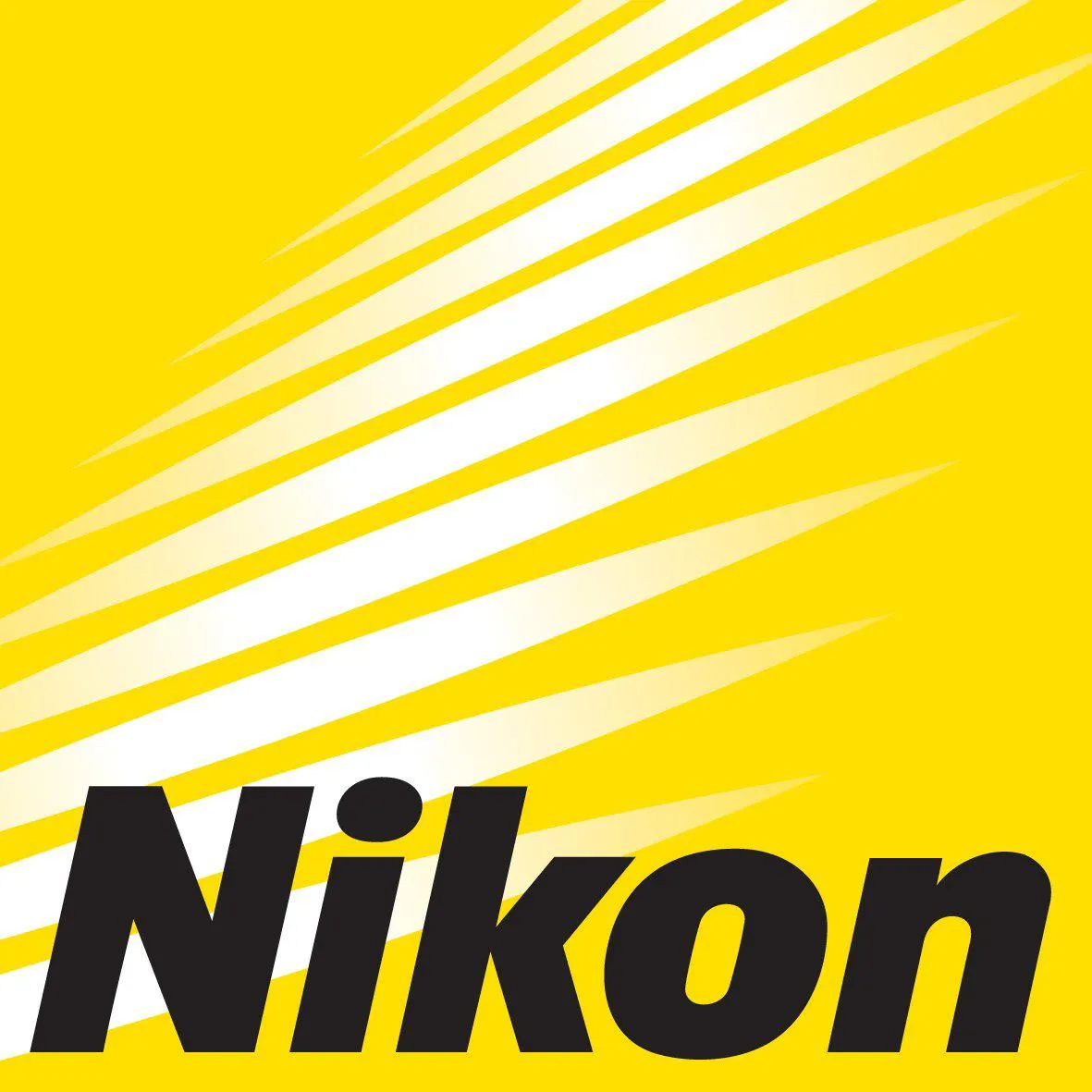
Nikon

Leica Microsystems

Oxford Instruments
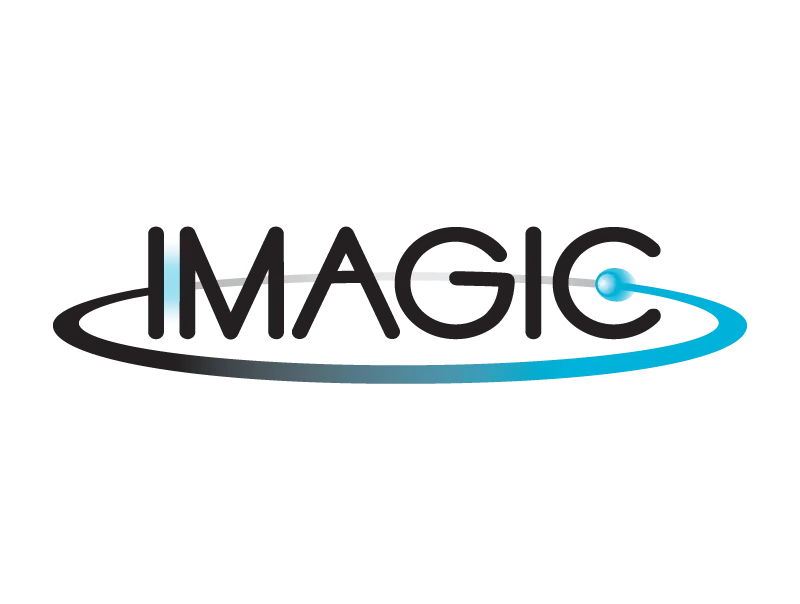
IMAGIC






